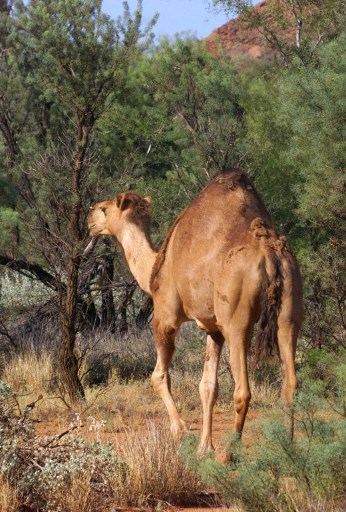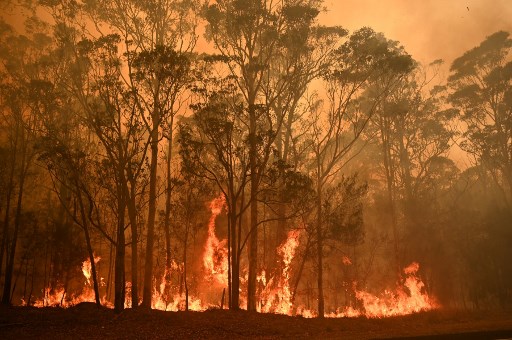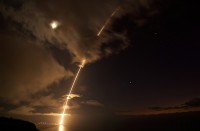
AFP PHOTO/Torsten BLACKWOOD (Photo by TORSTEN BLACKWOOD / AFP FILES / AFP)
SYDNEY, Australia (AFP) – Helicopter-borne marksmen killed more than 5,000 camels in a five-day cull of feral herds that were threatening indigenous communities in drought-stricken areas of southern Australia, officials said Tuesday.
Aboriginal leaders in South Australia state said extremely large herds of the non-native camels had been driven towards rural communities by drought and extreme heat, threatening scarce food and drinking water, damaging infrastructure, and creating a dangerous hazard for drivers.
The cull in the Anangu Pitjantjatjara Yankunytjatjara (APY) Lands — home to about 2,300 indigenous people in the arid northwest of South Australia — ended on Sunday, said APY general manager Richard King.
“We appreciate the concerns of animal rights activists, but there is significant misinformation about the realities of life for non-native feral animals, in what is among the most arid and remote places on Earth,” King said in a statement on Tuesday.
“As custodians of the land, we need to deal with an introduced pest in a way that protects valuable water supplies for communities and puts the lives of everyone, including our young children, the elderly, and native flora and fauna first.”
King said weakened camels frequently became stuck and died in water holes, contaminating water sources needed by locals and native animals and birds.
“The prolonged dry period, while not difficult for native wildlife, leads to extreme distress for feral camels,” he said.
APY officials said the operation had removed more than 5,000 camels.
The cull came as Australia experienced its hottest and driest year on record in 2019, with the severe drought causing some towns to run out of water and fuelling deadly bushfires that have devastated the country’s southeast.

Camels were first introduced to Australia in the 1840s to aid in the exploration of the continent’s vast interior, with up to 20,000 imported from India in the six decades that followed.
Australia is now thought to have the largest wild camel population in the world, with official estimates suggesting more than one million are roaming the country’s inland deserts.
The animals are considered a pest, as they foul water sources and trample native flora while foraging for food over vast distances each day.
Traditional owners in the APY Lands have for years mustered and sold off feral camels.
But more recently they have “been unable to manage the scale and number of camels that congregate in dry conditions”, according to the environment department.
© Agence France-Presse








